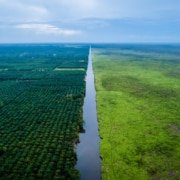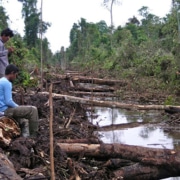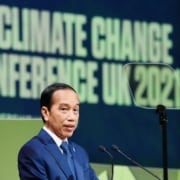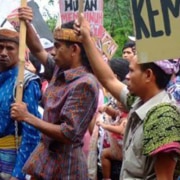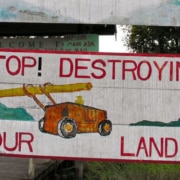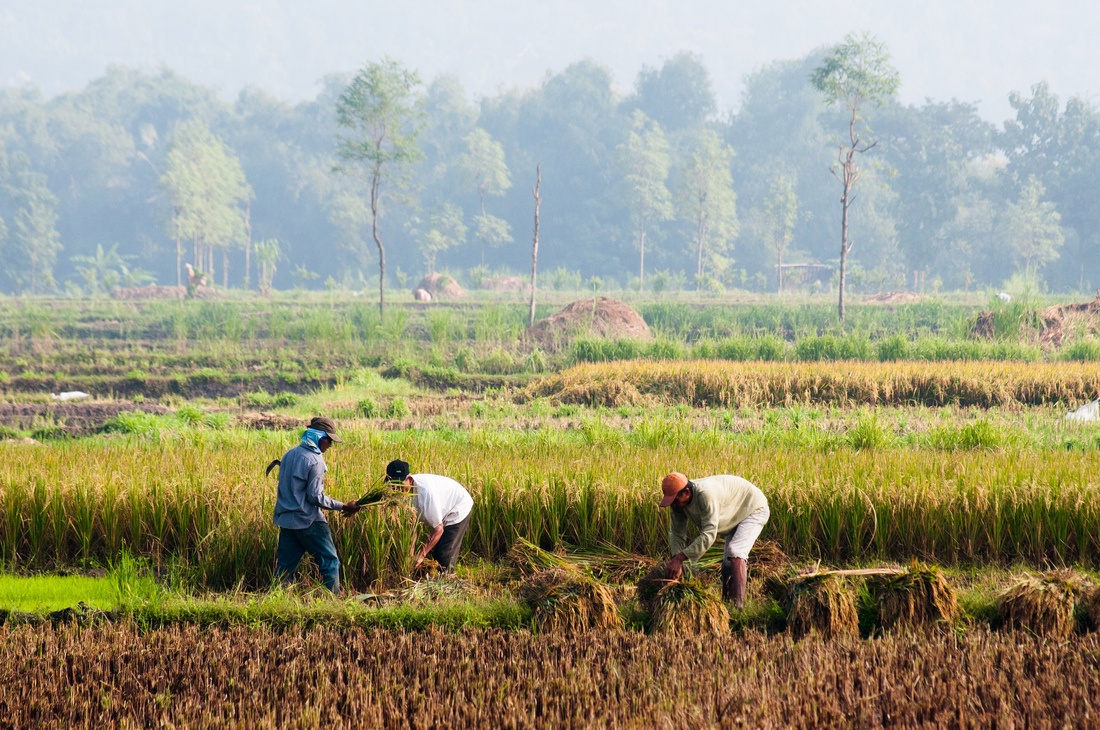
The government has said it plans to issue seven million new land certificates in 2018, and nine million in 2019. Photo by Aulia Erlangga for CIFOR.
On 12 March, Bambang Brodjonegoro, minister for national development planning and head of the National Development Planning Agency (Bappenas), delivered a public lecture at the University of Melbourne in which he touted Indonesia’s ambitious land certification program as a step toward equitable and sustainable economic development.
Influenced by the ideas of people like economist Hernando de Soto, the administration of President Joko Widodo (“Jokowi”) believes that land certification could increase economic growth and improve people’s welfare by providing secure land rights. This, the government believes, could increase investment in land, reduce land tenure conflict and enhance the use of agricultural land. The government also hopes to streamline Indonesia’s inefficient land bureaucracy, which has made the country one of the most difficult and expensive countries in the world for land registration, ranking 107 out of 177 countries.
Indonesia’s land law is complex. In rural areas, much land is still subject to communal ownership, and governed by traditional customary law, or adat. At the same time, the government has sought to maintain a degree of control over forested land, and gain income by issuing forest usage or exploitation licences, even though many traditional communities rely on this forested land for their livelihoods and food security.
Land certification programs have, in fact, been a concern for successive Indonesian administrations for decades. Since the 1980s, the government has promoted land certification as a strategy to facilitate national development. Governments have crafted national programs, like the National Agrarian Operations Project (Prona) and the People’s Service for Land Certification (Larasita) (in 1981 and 2006, respectively), to facilitate land certification in urban, rural and remote areas of Indonesia. But the government has managed to reach just 44 per cent of its land certification targets since the 1980s, leaving a backlog of about 60 million land certificates still to be issued.
Since coming to power, the Jokowi administration has ramped up the land certification process. In 2016, Jokowi promised to issue 21 million new land certificates across the country between 2017 and 2019. The president said he wanted the government to “give certificates to people every day”. This commitment is extremely ambitious given that between 2007 and 2011, the government issued only between 560,000 to 5,200,000 certificates each year.
Although the government is optimistic about the benefits of land certification, there are indications that in the Indonesian case, at least, land certification may have led to some unintended negative outcomes, including land speculation, land tenure conflicts and deforestation.
The main problem of land certification programs, including in rural areas such as Flores, East Nusa Tenggara, is that they have encouraged people who had previously managed land in a communal manner to treat land as a commodity that can be easily bought and sold for short term economic gains. In Nagekeo district on Flores, for example, land certification led to a significant increase in land transactions, particularly sales by the indigenous Lape ethnic group to migrants. In response, local traditional leaders known as mosalaki have written to the district National Land Agency (BPN) to ask it to stop certifying Lape land.
Land certification programs in Indonesia may have contributed to the country’s Gini coefficient for land ownership getting worse. This is a measure of land ownership inequality where 0 corresponds with equality and 1 with inequality. The Gini coefficient for land ownership increased from 0.5 in 1983 to 0.7 in 2003. This is the last year for which data is available, and it is true that factors such as the Asian financial crisis may have also played a role but these results are very concerning. There are suggestions that accelerated land certification under the administration of Susilo Bambang Yudhoyono was one factor contributing to poor farmers with small land holdings being forced to sell their land to larger capital holders.
Another problem is that when local governments launch land certification programs, especially in societies where land is considered a collective asset, land conflicts are often created. Many communities in eastern areas of Indonesia, such as Flores, Maluku and Papua, view land as a communal asset, and have experienced land tenure conflicts following land certification programs, which often break communal lands into smaller individual plots. In some cases, such as in Nagekeo district, the district administration has rushed the land certification process to meet national targets, ignoring the strict procedures that should be followed. This has led to conflicts among communities, especially when customary land is certified for commercial purposes. According to BPN data, there were 4,000 land tenure conflicts in Indonesia in 2003 alone.
Finally, there is limited evidence to suggest that land certification programs will reduce deforestation, as is often claimed. When the rural poor secure land tenure over forested land, they often either convert their individual forested holdings into agricultural land or sell them to large agricultural plantations, such as for palm oil or timber, sometimes following coercion or intimidation. Last year, the Jokowi administration even announced plans to offer free land certification to local growers to speed up oil palm tree replanting.
Although land certification programs have been successful in some countries, such as Thailand and Mexico, the early evidence in Indonesia is less conclusive. The land certification process has not paid sufficient attention to local cultural dynamics nor addressed the fact that there are strong economic incentives for poor rural people to sign away their rights to land. Although secure rights to land can be important for poverty reduction, there is no need for the government to rush the certification process.
If the government is serious about promoting equitable and sustainable rural development it would do well to slow down and re-evaluate the land certification program so that it is more attuned to complex and diverse local dynamics.


